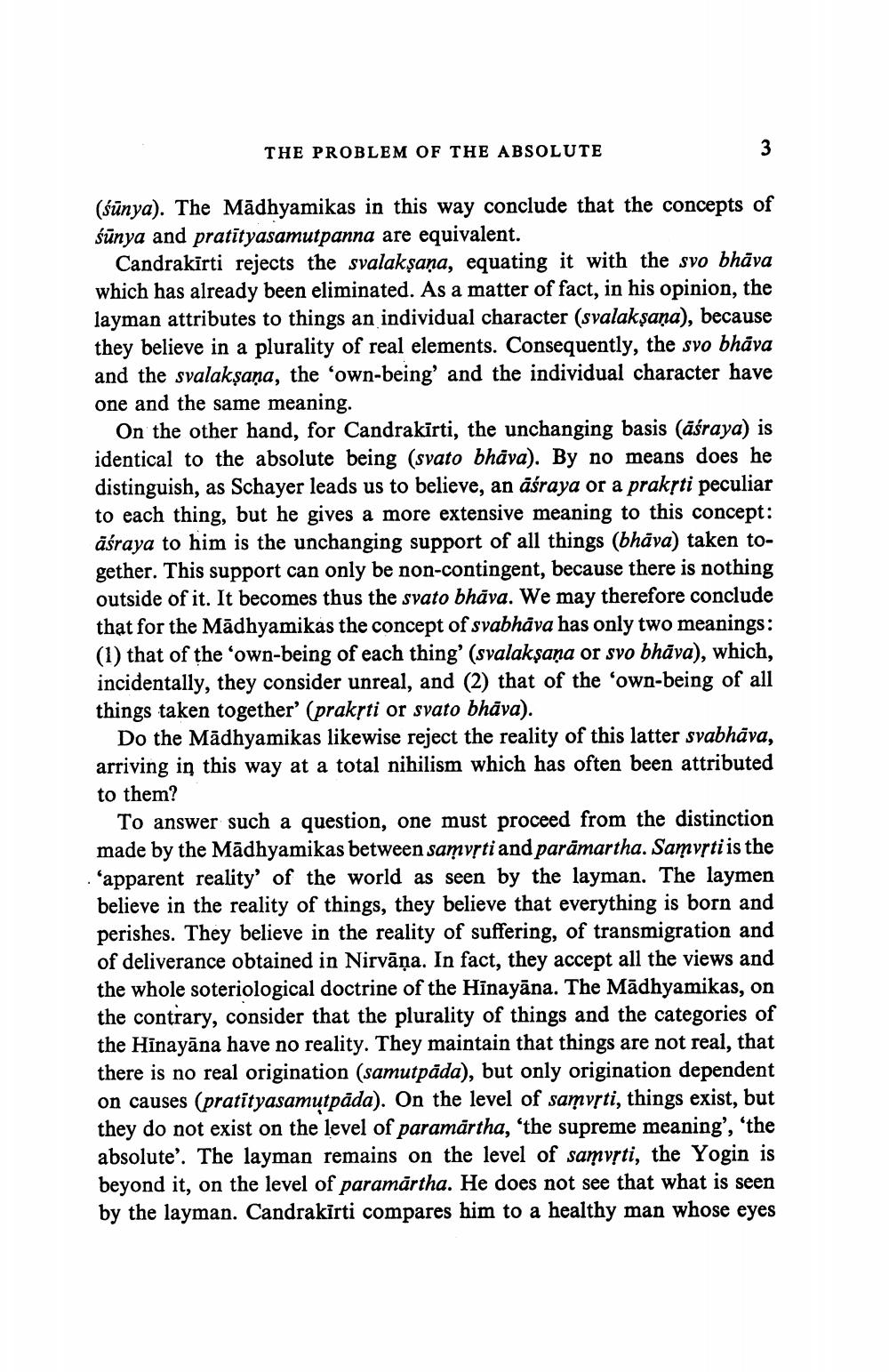________________
THE PROBLEM OF THE ABSOLUTE
(śünya). The Madhyamikas in this way conclude that the concepts of śūnya and pratītyasamutpanna are equivalent.
Candrakirti rejects the svalaksana, equating it with the svo bhāva which has already been eliminated. As a matter of fact, in his opinion, the layman attributes to things an individual character (svalaksana), because they believe in a plurality of real elements. Consequently, the svo bhāva and the svalakṣaṇa, the ‘own-being' and the individual character have one and the same meaning.
On the other hand, for Candrakirti, the unchanging basis (äśraya) is identical to the absolute being (svato bhāva). By no means does he distinguish, as Schayer leads us to believe, an aśraya or a praksti peculiar to each thing, but he gives a more extensive meaning to this concept: aśraya to him is the unchanging support of all things (bhāva) taken together. This support can only be non-contingent, because there is nothing outside of it. It becomes thus the svato bhāva. We may therefore conclude that for the Madhyamikas the concept of svabhäva has only two meanings: (1) that of the ‘own-being of each thing' (svalakṣaṇa or svo bhāva), which, incidentally, they consider unreal, and (2) that of the ‘own-being of all things taken together' (praksti or svato bhäva).
Do the Mādhyamikas likewise reject the reality of this latter svabhāva, arriving in this way at a total nihilism which has often been attributed to them?
To answer such a question, one must proceed from the distinction made by the Madhyamikas between samvrti and paramartha. Samvrti is the 'apparent reality' of the world as seen by the layman. The laymen believe in the reality of things, they believe that everything is born and perishes. They believe in the reality of suffering, of transmigration and of deliverance obtained in Nirvāņa. In fact, they accept all the views and the whole soteriological doctrine of the Hinayāna. The Mādhyamikas, on the contrary, consider that the plurality of things and the categories of the Hinayāna have no reality. They maintain that things are not real, that there is no real origination (samutpäda), but only origination dependent on causes (pratityasamutpada). On the level of samvști, things exist, but they do not exist on the level of paramartha, 'the supreme meaning', 'the absolute'. The layman remains on the level of samvști, the Yogin is beyond it, on the level of paramartha. He does not see that what is seen by the layman. Candrakirti compares him to a healthy man whose eyes




